Second Order Thinking
And Then What?

What is Second Order Thinking?
Second order thinking can be summarised as going beyond the obvious and avoiding unintended consequences.
- It is about thinking in terms of interactions and time, and considering the consequences of a potential decision or action.
- It is about seeing things that other people don't or can't see.
- It is more deliberate thinking.
- It takes longer and is harder work than first order thinking.
- It leads to extraordinary performance.
The key question to ask is: "And then what..?"
First-order thinking is usually quick and easy and addresses the immediately presenting symptoms.
First Order Thinking
Practising Second Order Thinking
Here are 4 guiding principles you can use to put second order thinking into practice:
- Question everything. Don't make assumptions, and when exploring possible solutions, always ask "what happens then," to understand longer-term impacts.
- Involve others. Speak with colleagues to get alternative perspectives. Undertake a thorough stakeholder analysis.
- Think long term. Consider how the decision will play out at different time points, for example, a week, month or year from now, and whether circumstances might change.
- Don't discount options too quickly. Keep all options on the table until you're sure they aren't the right choice.
It’s not supposed to be easy. Anyone who finds it easy is stupid. [Charlie Munger]
The EEMap Process
This is a process that I developed in my business career and used successfully with many corporate clients.
I called it EEmap because the application of second order thinking requires you to systematically think through the Exposures [i.e. issues with consequences] that will have to be identified and addressed at each step of the Evolution of the solution.
This is the discipline of considering impacts before rushing into action.
This simple diagnostic process causes you to:
- Test
the impact of any step at any stage in the decision making process.
- Identify
the issues that will arise.
- Identify
those people most affected by it.
- Understand
the impacts and how, where and why failure may occur.
- Establish exactly what has got to be done to make it a success.
The diagram below shows the usual, typical first order thinking approach, namely: working out the steps, allocating the tasks and expecting a result – but without assessing the impacts and issues!
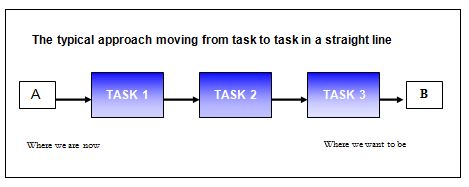
The diagram below shows the EEMap approach moving step by step from task to task via recognition and resolution of all the dependent issues:
- The line of progress from A to B [the line of Evolution] from task to task and step to step is not a straight line.
- There are always dependent issues [or Exposures] that accompany each task and step and that have to be resolved before a successful transition takes place to the next step.
- Once a task [or set of set of tasks] has been identified, then you need to think carefully about all of the impacts and exposures that will arise and have to be resolved before you can successfully progress to the next task.
- This process can and should involve as many people [as is possible] who may be affected by your decisions. The more functional and departmental involvement in this process the better – as the analysis will be more comprehensive.
- You need to analyse, categorise and prioritise [across all functional areas] the issues that are associated with each step. It is important to pay particular attention to the people impacts, and to identify risks and issues for each.
- This process was designed for a business setting, but it can easily be adapted and applied as a diagnostic decision making approach in any other context.
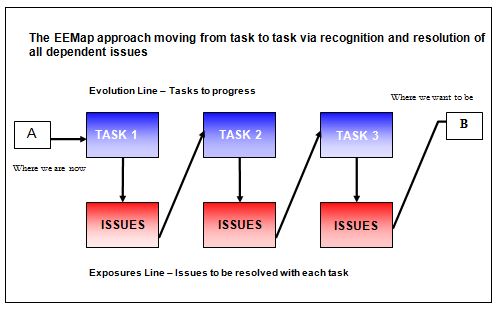
Further Resources When Considering Second Order Consequences:
Getting From A to B Is Not Aways A Straight Line
Inversion - Avoiding Stupidity Is Easier Than Seeking Brilliance
Iatrogenics - Do Something Syndrome
Less Is More: Yet We Miss Opportunities to Improve Through Subtraction
The Metagame Approach to Second-Order Thinking - 5 Guiding Principles
Further Third Party Reading:
The Law of Unintended Consequences
Return to: How To Think
LATEST ARTICLES
Staying Committed When You Can't See Progress - The Psychology of Grit
 Uncertainty Is Not The Absence Of Progress, Only The Absence Of Reassurance. One of the most destabilising experiences in modern life is not failure, but uncertainty and staying committed when you can…
Uncertainty Is Not The Absence Of Progress, Only The Absence Of Reassurance. One of the most destabilising experiences in modern life is not failure, but uncertainty and staying committed when you can…The Battle For Your Mind - How To Win Inner Freedom In A Digital Age Of Distraction
 From External Events to Inner Events. We often think of “events” as things that happen out there: the traffic jam, the rude comment, the delayed email reply. But what truly shapes our experience is wh…
From External Events to Inner Events. We often think of “events” as things that happen out there: the traffic jam, the rude comment, the delayed email reply. But what truly shapes our experience is wh…How to See Your Thoughts Without Becoming the Story
 A Practical Guide to Thought-Awareness. You can spend your life inside the stories of your mind without ever learning how to see your thoughts clearly and objectively. Most of the stuff we tell oursel…
A Practical Guide to Thought-Awareness. You can spend your life inside the stories of your mind without ever learning how to see your thoughts clearly and objectively. Most of the stuff we tell oursel…The Collison Decision Matrix - A Simple Framework for Better Choices
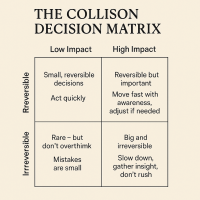 The Collison Decision Matrix Is A Practical Everyday Thinking Tool. Most of us spend a surprising amount of time worrying about decisions. From small ones such as what to wear, what to eat, what to te…
The Collison Decision Matrix Is A Practical Everyday Thinking Tool. Most of us spend a surprising amount of time worrying about decisions. From small ones such as what to wear, what to eat, what to te…The Power Of Asking The Right Question
 The Power Of Asking The Right Question Lies In The Quest For Insight. To experience the power of asking the right question you must develop the practice of asking questions. The best way to improve th…
The Power Of Asking The Right Question Lies In The Quest For Insight. To experience the power of asking the right question you must develop the practice of asking questions. The best way to improve th…Site Pathways
 Here is a site pathway to help new readers of Zen-Tools navigate the material on this site. Each pathway is based around one of the many key themes covered on this site and contain a 150 word introduc…
Here is a site pathway to help new readers of Zen-Tools navigate the material on this site. Each pathway is based around one of the many key themes covered on this site and contain a 150 word introduc…How To Live With Contradiction - Beyond Thought Let Stillness Speak
 A major impact on so many peoples' lives is the situational contradiction of unfilled realistic expectations. So where does all this leave us? Well here we are, with mental equipment that is more lim…
A major impact on so many peoples' lives is the situational contradiction of unfilled realistic expectations. So where does all this leave us? Well here we are, with mental equipment that is more lim…How To Trust The Process Of Mindfulness - Right Now
 In mindfulness, the process isn’t some distant goal — it's what is happening right now. When we talk about how to trust the process of mindfulness the credibility of the process is heavily dependent…
In mindfulness, the process isn’t some distant goal — it's what is happening right now. When we talk about how to trust the process of mindfulness the credibility of the process is heavily dependent…Inner Mastery For Outer Impact - Mental Clarity For Effective Action
 Insights only matter if they translate into consistent action. In a world crowded with quick fixes and motivational soundbites, the theme “Inner Mastery for Outer Impact” calls us to something more e…
Insights only matter if they translate into consistent action. In a world crowded with quick fixes and motivational soundbites, the theme “Inner Mastery for Outer Impact” calls us to something more e…The Wise Advocate - Helping You Achieve The Very Best Outcome
 The focus of your attention in critical moments of choice either builds or restricts your capacity for achieving the best outcome. When we talk of 'The Wise Advocate' its easy to think of the consigl…
The focus of your attention in critical moments of choice either builds or restricts your capacity for achieving the best outcome. When we talk of 'The Wise Advocate' its easy to think of the consigl…Trust The Process - Beyond The Cliche
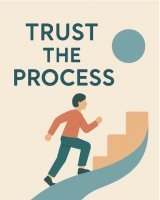 The phrase "trust the process" has become a cliche, the woo-woo mantra of the "self help" industry. Those three little words feel like they ought to mean something useful but hidden behind them are a…
The phrase "trust the process" has become a cliche, the woo-woo mantra of the "self help" industry. Those three little words feel like they ought to mean something useful but hidden behind them are a…The Dopamine Delusion - Why Anticipation Beats Achievement
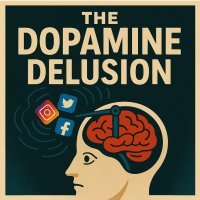 The thrill we feel is not in the having, but in the wanting. The more we have, the more we want. The more things we acquire and the easier things get for us, the more discontent we feel. The more spo…
The thrill we feel is not in the having, but in the wanting. The more we have, the more we want. The more things we acquire and the easier things get for us, the more discontent we feel. The more spo…